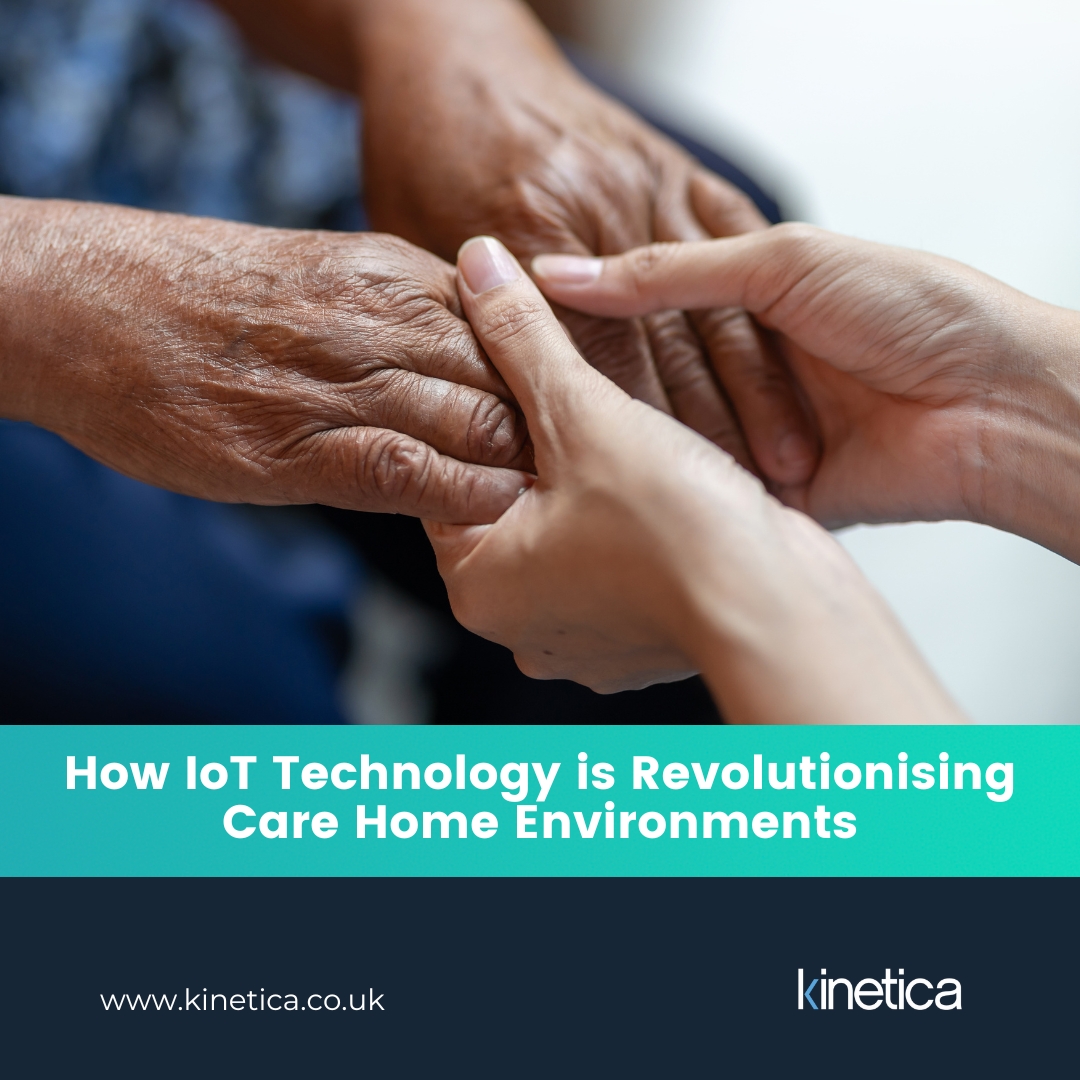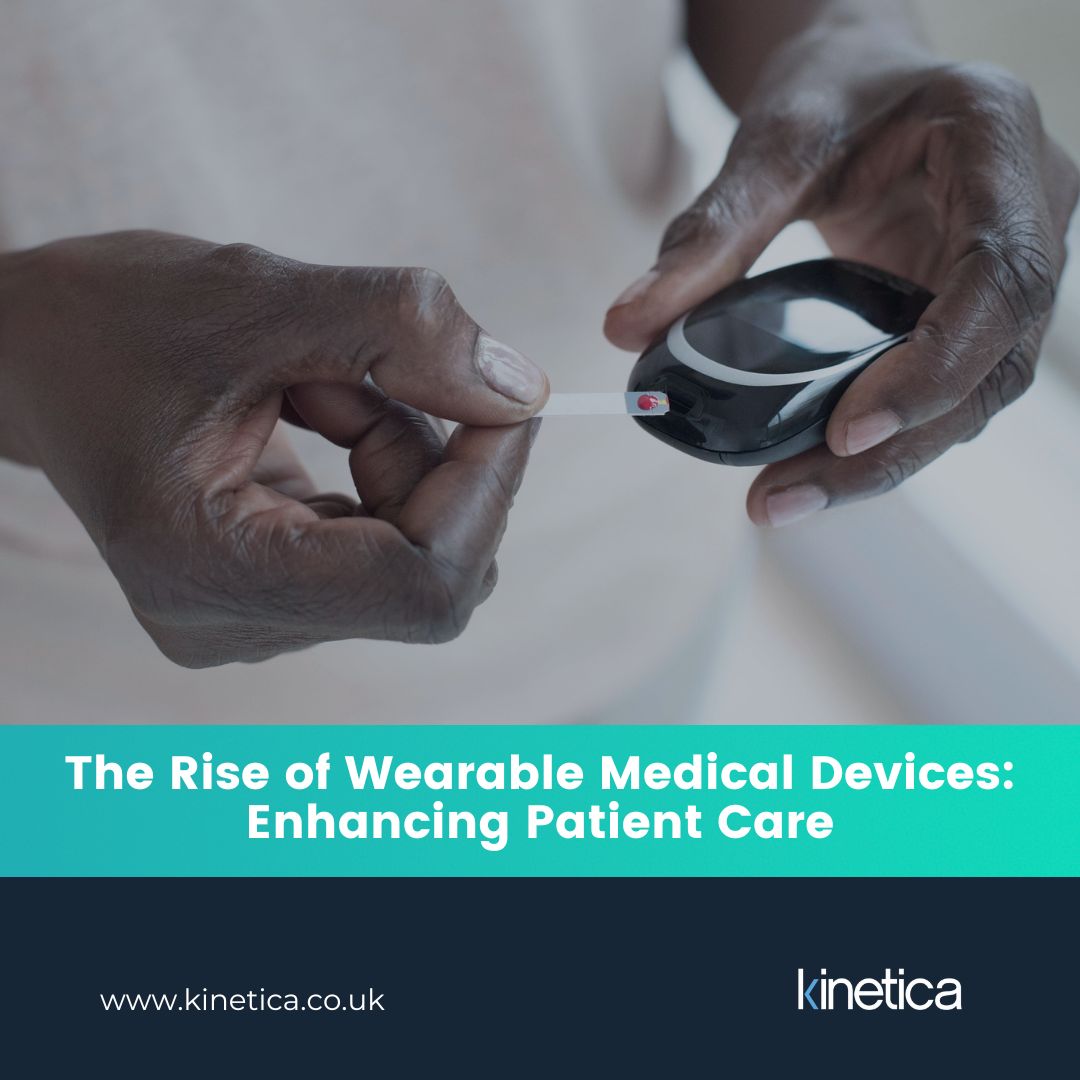INSIGHTS
The latest insights & news from Kinetica
How IoT Technology is Revolutionising Care Home Environments
26 Apr, 20245 Minutes.As our digital landscape continues to evolve, technology continues to have a positive impact...

As our digital landscape continues to evolve, technology continues to have a positive impact on various aspects of our lives, including how we care for the elderly and individuals with unique needs. One area where this transformation is particularly evident is in care home environments. With the advent of Internet of Things (IoT) technology, care homes are experiencing a revolution in the way they deliver services and enhance the quality of life for their residents. From remote monitoring to personalised care solutions, IoT is reshaping the landscape of eldercare in profound ways.
One of the most significant benefits of IoT technology in care homes is its ability to enable remote monitoring and enhance safety for residents. Through the deployment of sensors and smart devices, caregivers can keep track of residents' movements, vital signs, and environmental conditions in real-time. For instance, wearable devices equipped with fall detection capabilities can alert staff immediately if a resident experiences a fall, allowing for prompt assistance and intervention. Similarly, smart sensors installed in rooms can monitor temperature, humidity, and air quality, ensuring that residents are living in safe and comfortable conditions.
IoT technology also facilitates personalised care and health management for residents in care homes. By collecting and analysing data from various sources such as wearable devices, medical sensors, and electronic health records, caregivers can gain valuable insights into each resident's health status and individual needs. This data-driven approach enables caregivers to develop tailored care plans and interventions, improving the overall quality of care and enhancing the well-being of residents. For example, IoT-enabled medication dispensers can remind residents to take their medication at the right time and dosage, reducing the risk of medication errors and improving adherence to treatment regimens. Studies have shown that implementing IoT technologies can reduce medication errors by up to 50% (Institute of Medicine) and wearable devices can track vital signs, reducing hospital admissions by 22% and ER visits by 26% (Journal of Medical Internet Research).
Another aspect where IoT technology is revolutionising care home environments is in facilitating communication and social engagement among residents, their families, and caregivers. With the use of smart devices, such as tablets or interactive displays, residents can stay connected with their loved ones through video calls, messaging apps, and social media platforms. Additionally, IoT-powered communication systems can enable caregivers to send important updates and reminders to residents in real-time, fostering a sense of community and belonging within the care home. Moreover, interactive games and activities powered by IoT technology can promote cognitive stimulation and social interaction among residents, enhancing their overall quality of life.
While the benefits of IoT technology in care home environments are undeniable, there are also challenges and considerations that need to be addressed. These include concerns about data privacy and security, interoperability of different IoT devices and systems, as well as the need for proper training and support for caregivers to effectively utilise IoT solutions. Additionally, there may be resistance to adopting new technologies among some residents and staff members, highlighting the importance of comprehensive education and communication strategies.
In conclusion, IoT technology is revolutionising care home environments by offering innovative solutions for remote monitoring, personalised care, and enhanced communication. By leveraging the power of IoT, care homes can improve safety, efficiency, and quality of care for their residents, ultimately enhancing their overall well-being and quality of life. However, it is essential to address challenges such as data security and staff training to maximise the benefits of IoT in eldercare. As technology continues to evolve, the potential for IoT to transform care home environments for the better is vast, offering hope for a future where ageing populations can live with dignity, comfort, and independence.
As we embrace the potential of IoT to revolutionise care home environments, it raises important questions about balancing technological advancements with the human-centric aspects of caregiving, sparking a crucial dialogue about the future of eldercare in a digital age.
How do you envision the future integration of IoT technology in care home environments, and what steps can be taken to ensure that it enhances the human-centric approach to eldercare while addressing potential ethical and social implications?
#Kinetica #IoTinCaring #FutureofCare #DigitalHealth


